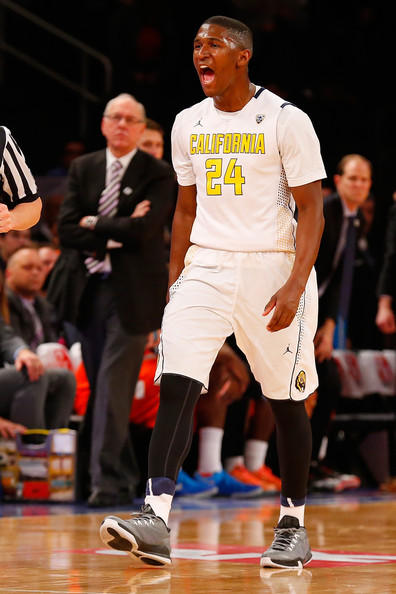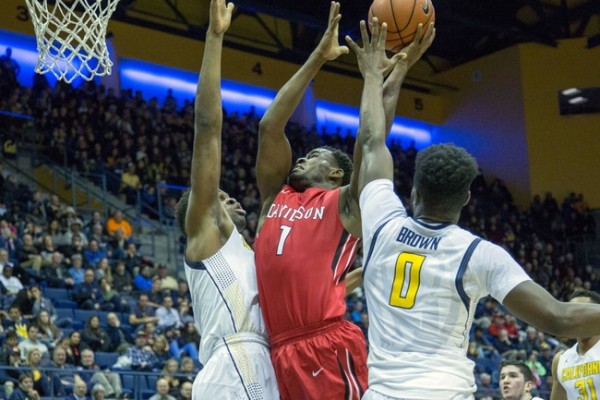On the Quiet Rise of the California Golden Bears
Posted by Andrew Murawa (@Amurawa) on January 6th, 2016About three weeks ago, after California struggled to put much of any space between itself and Incarnate Word, we here at the Pac-12 microsite staged an intervention. Without actually intervening, of course. But we did call out the Golden Bears’ loaded roster for poor defensive effort, a general lack of energy, non-existent half-court offense and questionable chemistry. Given that it only a month into the season, we still gave Cuonzo Martin‘s team a pass with upcoming dates against St. Mary’s, Virginia, Davidson and the entirety of the Pac-12 on the horizon. Since that December 9 game, the Golden Bears have gone 5-1, with the sole loss coming in an overtime affair at Virginia, KenPom‘s fourth-best team in America. That loss, if anything, gave Cal its first taste of credibility. So are the the boys from Berkeley now out of the woods and headed to the Final Four? Hmmmmm.
There is a lot to be excited about in the East Bay right now. Jordan Mathews can’t miss (52.3 percent from three-point range). Jabari Bird is finally showing the two-way consistency that was missing in his first two campaigns. Kameron Rooks and Kinglsey Okoroh are making wholly unanticipated leaps into relevance as capable big men on both ends. Ivan Rabb is impressing with his ability to both pull bigs away from the hoop but also bang with them down low. Sam Singer has been a legitimately good reserve off the pine. Jaylen Brown, while still struggling to put it all together, has started hitting more jumpers while improving his defensive effort and terrorizing opponents in transition. All of this is happening while senior point guard Tyrone Wallace is in the midst of a serious drought (13.3 percent from three-point range; three turnovers per game). In past years, such a malaise from Wallace would have surely coincided with a significant losing streak (see: last year’s devastating 1-8 stretch in late December and January).
The biggest key, however, for the Bears’ recent surge has been their defense. Over the six-game stretch (which admittedly includes a game against a really bad offensive team in Coppin State), they held opponents to 0.89 points per possession. If we eliminate Coppin State from the data, the Bears held the other five teams (all with top 62 offenses) to only 0.93 points per possession. What changed? First, Rooks and Okoroh have stepped into most substantial roles at the center position and are starting to get comfortable as rim protectors. This has enabled Rabb to slide over to his more natural power forward spot, where he can check smaller guys like Kyle Kuzma and Wesley Gordon instead of players like Jakob Poeltl and Josh Scott. Next, there are also the simple answers: comfort and effort. This group is starting to getting comfortable with each other and their coaches’ expectations. Furthermore, the Bears are just putting a lot more effort into the defensive end than what we saw through the first month of the season.
While renewed defensive intensity has launched the Bears from an underachieving afterthought into a team that can again be mentioned among the best in the conference, they’ve still got a long way to go before we can consider this team a national threat. When your two highest usage offensive players are perimeter guys who have yet to show an ability to knock in perimeter shots, good teams will be able to cheat defensively. That’s clearly the case here, where Wallace and Brown have combined to shoot 24-of-87 (27.6%) from beyond the arc and 33-of-102 (32.4%) on two-point jumpers. No matter how good Mathews and Bird are shooting the ball (currently a combined 39.5 percent on threes), Wallace and Brown’s limitation creates significant offensive spacing issues. It may not be a hopeless situation, though: Brown is likely to correct his shooting weakness at some point, and Wallace has had periodic good stretches in shooting the ball (he started 14-of-28 from long range in the Bears’ first 11 games last season). Still, unless those two (or at least one of those two) can connect on big shots in the big games to come (read: March), that one significant weakness may be enough to hold California back from cashing in on all that potential.












































